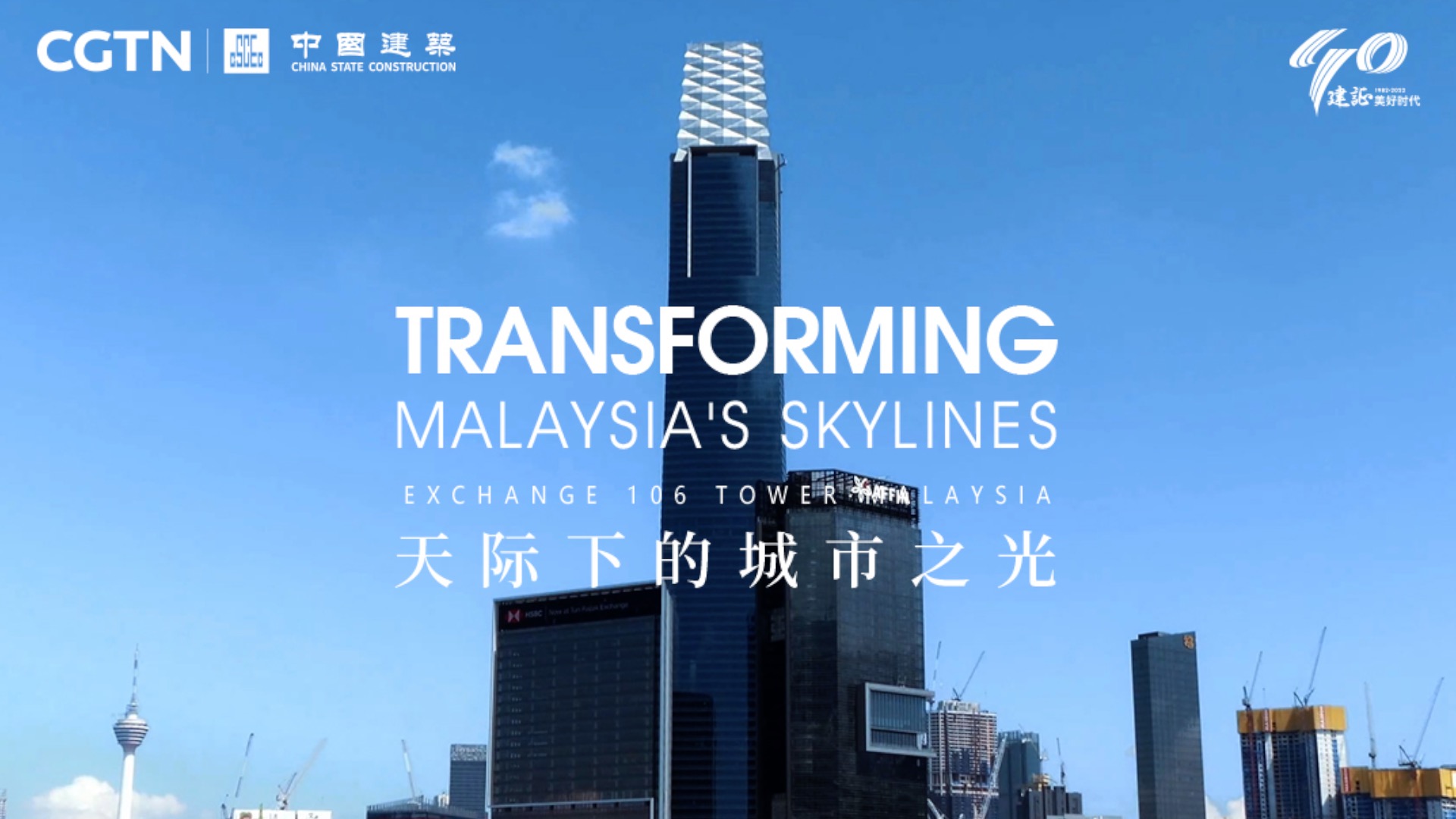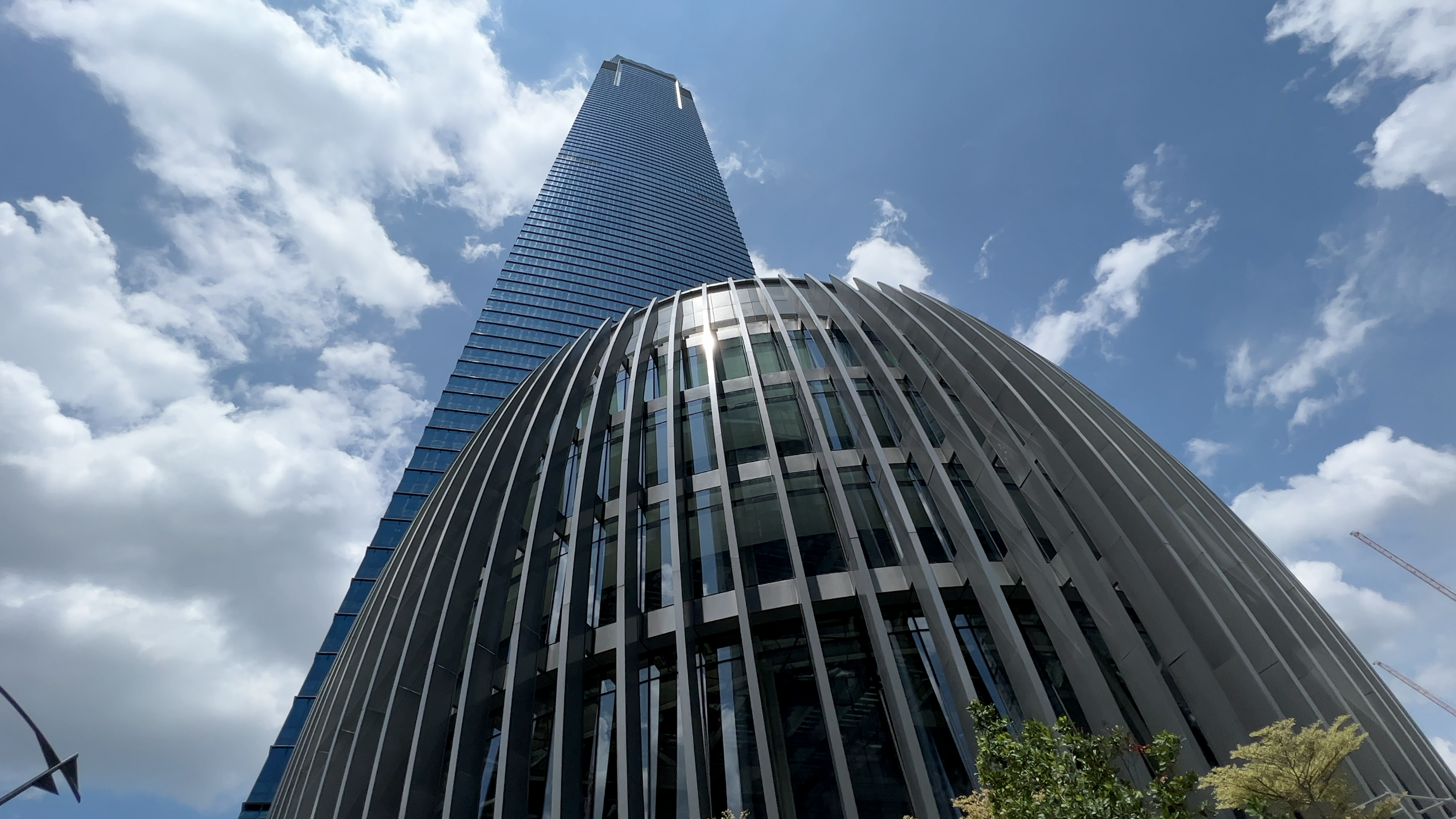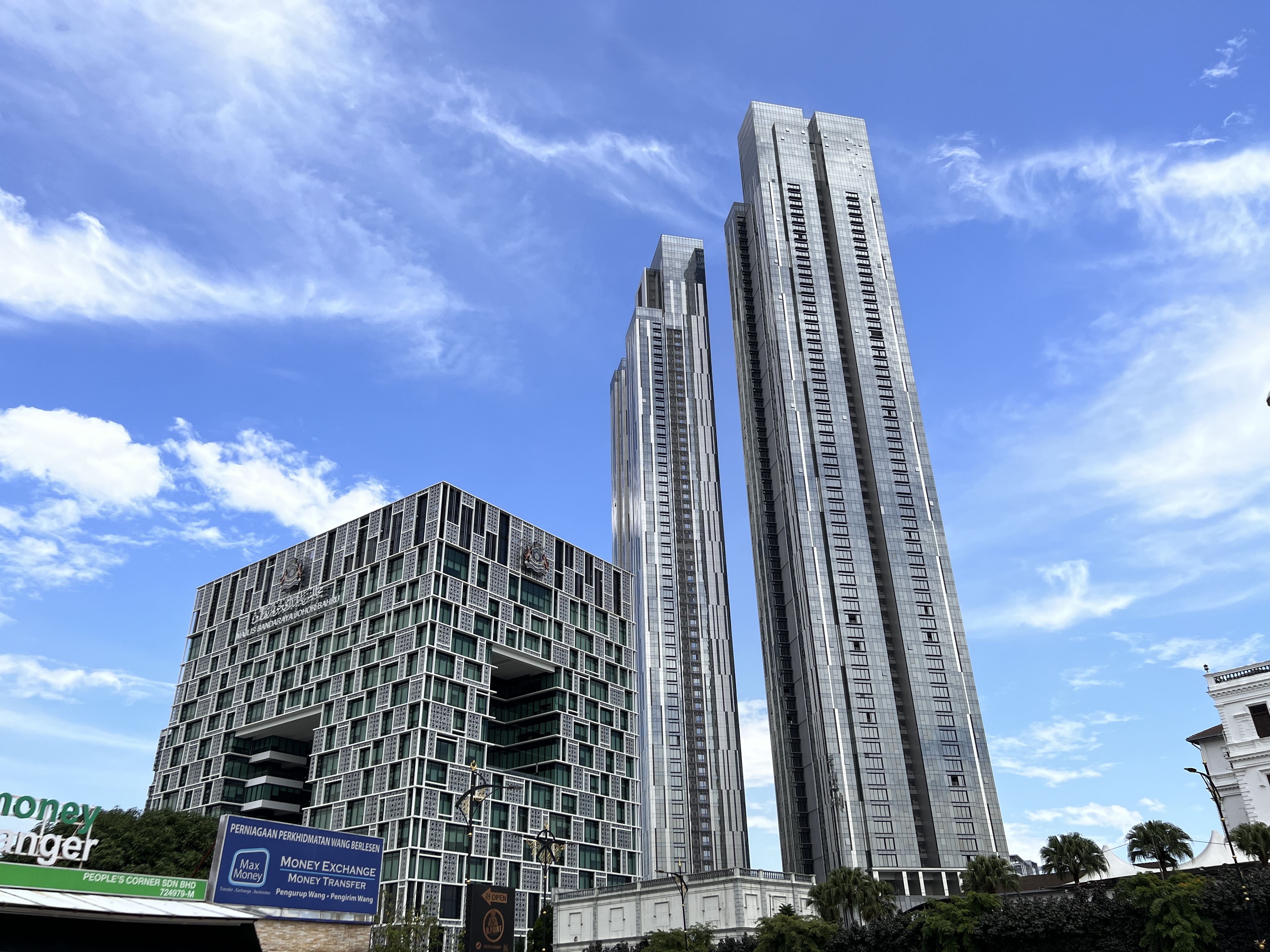03:37

Malaysia was quick to see the potential of the China-proposed Belt and Road Initiative (BRI) and get on board. Since the advent of the BRI, the Southeast Asian country has seen the creation of a joint China-Malaysia industrial park, joined forces to upgrade an east coast port, and seen major investments in manufacturing, such as the establishment of a train assembly plant equipping several local rail systems and the construction of Malaysia's biggest-ever infrastructure project, the 660-kilometer East Coast Rail Link.
These projects have helped boost bilateral trade and investment, upgrade public transit and other infrastructure, bring new technology and create opportunities for local contracts and skilled jobs for Malaysians.
Chinese construction firms, such as the China State Construction Engineering (M) Sdn Bhd (CSCEC Malaysia), have also been transforming the skylines of cities across the country.

CSCEC's most iconic project in Malaysia is the TRX Exchange 106 Tower. /CGTN
CSCEC's most iconic project in Malaysia is the TRX Exchange 106 Tower. /CGTN
Its most high-profile project – the Exchange 106 Tower – soars more than 450 meters into the Kuala Lumpur skies. It went up at a speed never before seen in Malaysia at around one floor every three days.
The tower is part of the Tun Razak Exchange, which is envisaged to become the new central business district of Kuala Lumpur.
"We needed their expertise on the super-tall structures," explained Exchange 106 general manager Patrick Honan. "It's a very lightweight structure in terms of what has been built with a concrete core, and the steel beams and trapezoid decking give it efficiency and sustainability."
"It enabled us to get a super-fast build. We achieved this construction in just over three years to get to complete and open, which is remarkable for the size of the building," he said.

The Astaka condominium in the country's south was the tallest residential building in Southeast Asia. /CGTN
The Astaka condominium in the country's south was the tallest residential building in Southeast Asia. /CGTN
The company has undertaken around three dozen projects in Malaysia to date, around half of them already completed, including the Astaka condominium in the southern city of Johor Bahru, which at completion was the tallest residential structure in Southeast Asia.
Local engineer Chok Kong Wai, a director with CSCEC Malaysia, worked on that project, as well as the Exchange 106 Tower.
"We were using the stealth climbing platform. Also, it's the first for the Exchange 106 using the wall-climbing system for the tower crane," he said. "It's the first in Malaysia. This one we never experienced before."
He said working for CSCEC has been an eye-opener for him and great for his career.
Parthiban Ponusamy had previously worked as a safety supervisor for local companies for 20 years.
"When I got a chance to work for China State Construction, I was appointed as a senior safety manager. Along the way, I've learned a lot of things about super high-rise constructions. After several years working, I was appointed as a safety director for CSCEC Malaysia. I feel extremely happy about it because it gave me a chance to build up my career."
CSCEC Malaysia MD Lyu believes the company has been positively contributing to the Belt and Road Initiative and hopes to see more benefits to the local economy moving forward.
Other than using new construction technologies from China for super high-rise construction and "smart site" development, the company has also put together a localized management team. It also provides subcontracting resources to promote the construction of local projects and jointly contribute to the development of the Malaysian Industrial Revolution 4.0.
With landmarks, such as the Astaka in the country's south and the Exchange 106 Tower in the capital, CSCEC – like the Belt and Road initiative – is leaving a transformative and indelible mark on Malaysia.

